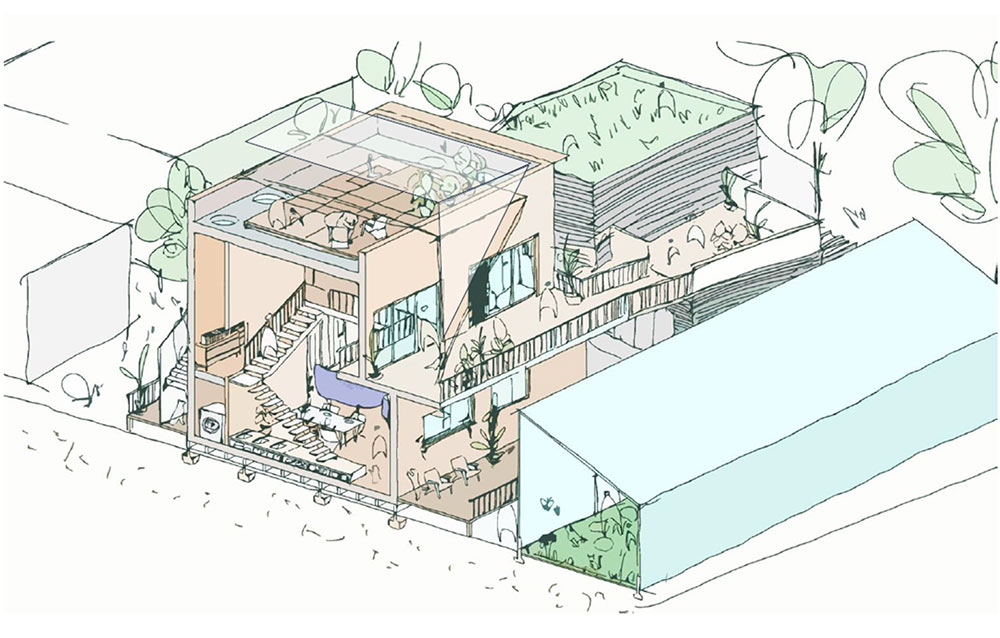PROJECT HABITAT ARTEFACT D | COMMUNITY LIVING SPACE
PART 1 CONCEPTION
This project aimed to expand the students’ experience in designing living spaces by reflecting on the challenges and responsibilities of transforming our built environment and engaging them in the collective action of making living spaces in the city through a CoDesign activity. For the first stage of the project students worked within their Studio Groups as a ‘Project Team’ aiming to conceive a masterplan for a housing development for a site in Hulme.
The masterplan then became the basis for each student to conceive an individual single-family dwelling which formed integral part of a collective community. The key functional & spatial requirements for this single-family dwelling were as follows: the family needed to be composed by four individuals; all dwellings were two-storey high with two/ three bedrooms; and the overall size of the dwelling should be no more than 85 square metres over the two storeys.
PART 2 RESOLUTION
In part 2 of the project, the students worked individually to advance their single-family dwelling designs from a conceptual to a resolution level.
Throughout this process, they explored and developed their designs through key strategic design decisions. This involved considering qualitative aspects of both functional and spaces, such as stairs and corridors, in terms of comfort and accessibility; environmental performance in relation to the climate emergency; as well as tectonics i.e. materiality, constructability and structural performance. SF Material composition, and the connection between building parts and systems formed part of this enquiry.


